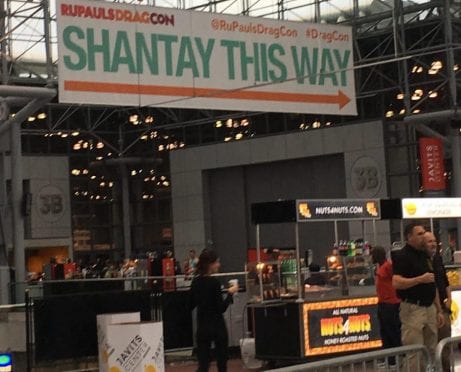
Eric Strausman
It’s Pride Month! June is a designated month for LGBTQ+ people and allies to celebrate the history of human rights and address the ongoing work for LGBTQ+ equality, acceptance, belonging, and mattering.

As the month unfolds, you might notice more rainbow flags and “Love is Love” window decals at your favorite retailers, rainbow burger wrappers at your favorite fast food places, and multi-color routes in your favorite ride-share apps.
Why is Pride Month in June? Why do so many corporations suddenly showcase rainbow flags and inclusive quotes?
As a consumer, how do we know which businesses are truly advocates for LGBTQ+ equality and which are taking advantage of a social movement to impact their own bottom line?
What Were the Stonewall Riots, Really?
In 1961, 49 out of 50 states considered private and public homosexual acts such as kissing, holding hands, and dancing together to be criminal offenses. Psychiatrists during this time used unethical and dangerous methods in an attempt to “cure” homosexuals.
It wasn’t a safe time to be LGBTQ+. The Stonewall Inn, a bar owned by the Mafia in the Greenwich Village neighborhood of Manhattan, was one of the few places in New York City that provided refuge to queer folx, drag queens, and homeless youth.
Laws against homosexual acts permitted police regularly to raid gay nightclubs, but the seedy LGBTQ+ haven offered regular bribes to the police for insider tips on upcoming raids.
During these incursions, law enforcement would often confiscate the establishment’s liquor and verify bar patrons’ gender through frisking or other intrusive means. The police detained individuals wearing clothing that didn’t conform to their assigned gender, as well as those suspected of trying to flirt with someone of the same sex.
On the night of June 28, 1969, police raided the Stonewall Inn and began to make arrests. The crowd that grew outside of the bar erupted when an officer hit Stormé DeLarverie, a black lesbian, for complaining that her handcuffs were too tight.
Marsha P. Johnson, a black drag queen, and Sylvia Rivera, a Latinx queen, were two of the first to actively resist the police that night. Though they were among the first to take action, many other protesters also threw bricks, bottles, shot glasses, and even molotov cocktails at the officers.
The shot glass that Johnson threw later became known as the “shot glass that was heard around the world.”
Although there were activists such as the Mattachine Society and the Daughters of Bilitis who came before the Stonewall Riots, many historians consider the six nights of the Stonewall Riots to be the catalyst for the modern LGBTQ+ rights movement.
The commemoration of the riots through the Christopher Street Liberation Day on June 28, 1970 marked the first anniversary of the Stonewall riots with an assembly on Christopher Street and simultaneous Gay Pride marches in Los Angeles, Chicago, and San Francisco. These were the first Pride marches in U.S. history.
LGBTQ+ Oppression Is Not Seasonal — Your Marketing Shouldn’t Be, Either
50 years later, annual Pride festivals and parades look quite a bit different than the grassroots celebrations of 1970. As our social environment continually changes and evolves, more corporations are vocalizing their support for the LGBTQ+ community (especially now that there’s less of a business risk) with rainbow products, flags, social media filters, and branding.
The combined buying power of the LGBTQ+ population is over $3.9 trillion. Basic market economics posits that where there is a market, a marketer will soon follow.
The growing trend of commercialization and corporate backing of Pride, or “Rainbow Capitalism,” poses many threats to the grassroots activism that Pride once was.
LGBTQ+ people still face legal discrimination, hate crimes, homelessness, lack of access to health care and education, poverty, and mental illness. During the COVID-19 pandemic, these issues were only being exacerbated.
However, they are now often being ignored at Pride festivals. Instead, they’re traded in for all-night celebrations, corporate-sponsored VIP tents, and selfie booths hosted by Fortune 500 companies.
Companies often commercialize holidays, turning celebration into cash. It’s tempting for a brand that does not offer consistent support to the LGBTQ+ community to profit off of Pride and queer consumers.
While marching for equality, LGBTQ+ activists waved rainbow, transgender, and other diverse flags as a representation of their identities and shared alliance for social justice. Many companies commodify symbols of the LGBTQ+ movement by using these same emblems of justice as marketing strategies on social media.
In recent years, we’ve seen a proliferation of filters, cover photos, and rainbow-embellished products that become available each June, but these are not examples of how to be a good ally.
Social media slacktivism provides individuals and businesses with a path of least resistance to portray support for crises, social causes, and advocacy. Concrete actions must be consistent with the values of advocacy that companies advertise.
It is easy to pop a rainbow product on a shelf. But where are the profits going when the item is sold?
Are they being reinvested into the corporation? What percentage of profits will be donated to nonprofit groups?
Corporations can be true partners in generating awareness of a social cause. But they can also use the platform of a marginalized community for their own parasitic ulterior motives. It’s not that Pride stickers, fanny packs, flags, and social media filters should be demonized.
Pride products on the shelves in June have to be matched with consistent advocacy for the rest of the year.
What to Do Instead: How to Be a Good Ally
Youth Engaged has defined an ally as any person who “has a genuine, strong concern for the well-being of LGBT people, supports and accepts LGBT people, and advocates for equal rights and fair treatment… and who confronts challenges that LGBT people experience.”
Selling rainbow-stamped products, showcasing rainbow social media filters, and marketing to the LGBTQ+ marketplace and its allies is probably quite alright.
However, if you’re operating from a place of slacktivism and June is just about changing your logo on Twitter or hanging a flag in your store so queer people will spend their queer dollars there, you aren’t part of the solution. You’re perpetuating the problem.
There are ways to effectively support the LGBTQ+ community without using Pride as a way to pad your bottom line in Q2.
In June:
- If you’re selling Pride swag, donate the proceeds to nonprofit organizations that support LGBTQ+ populations, like the Trevor Project or Trans Lifeline.
- Take actions to ensure your company is supporting an inclusive LGBTQ+ culture. Employ LGBTQ+ folx to run your Pride campaigns to put money in the pockets of LGBTQ+ individuals. This way, you can also help to ensure your marketing strategies aren’t smothering the central motivators of Pride.
365 Days a Year:
- Implement inclusive, anti-discrimination corporate policies that specifically include sexual orientation and gender identity as protected characteristics in all stages of employment and company culture.
- Provide equal benefits to LGBTQ+ individuals and couples, inclusive health insurance, adoption assistance, non-traditional conception assistance, and mirrored parental leave for all genders.
- Have mandatory contractor and vendor non-discrimination policies that include sexual orientation and gender identity.
- Sponsor, expressly support, and advertise employee resource and workplace alliance groups.
- Use your platform to provide a signal boost to LGBTQ+ organizations.
- Take a risk to your bottom line by taking a stance. If you don’t take a stance on something, you’re siding with the oppressor. Doing nothing is actually doing something by silently enabling those in power.
How to Know Who’s Really an Ally
Use these questions to help determine who’s an ally and who’s not.
- Is the company that’s profiting off of Pride donating any proceeds to LGBTQ+ causes? If so, what percentage of profit?
- How long has the company advocated for the LGBTQ+ community?
- Does the organization donate to or invest in any causes, organizations, or politicians who are transphobic or homophobic?
- Does the “rainbow” only appear once a year? Or does the company support the queer community the other 11 months of the year?
- Where is the company sourcing their goods? Where are the products being manufactured? Are these locations LGBTQ+ friendly?
- Does the company in question pay employees a living wage?
- Is it open with sharing workplace conditions?
DO: Reference the Human Rights Campaign Foundation’s 2021 Corporate Equality Index.
DON’T: Don’t shop at an anti-equality institution.
This Is How We Do It: Examples of Being a Good Ally
Gillette featured Samson Bonkeabantu Brown, a Toronto-based artist and transgender man, shaving on camera while being coached by his father. The sharing of this pivotal life milestone brings awareness, visibility, and a chance to destigmatize the real lives of trans men.
Gillette shared the ad on Facebook with the caption “whenever, wherever, however it happens — your first shave is special.”
This was not the first time that Gillette has taken a progressive public-relations stance.
This ad was a part of their continued Best Men Can Be campaign, with its previous ad focused on toxic masculinity, and it is a great example of how to be a good ally.
Despite expected criticism and potential loss of revenues, Gillette chose to take a stance and bring intersectional awareness to the human rights movement.
The company committed “to donate $1 million per year for the next three years to nonprofit organizations executing programs in the United States designed to inspire, educate, and help men of all ages achieve their personal ‘best’ and become role models for the next generation.”
Meanwhile, IKEA has a long history of support for the LGBTQ+ community. In 1994, the company became the first major national television advertiser to show a gay couple in an ad.
IKEA announced that it would be selling a limited rainbow edition of its popular FRAKTA shopping bag in the United States for the month of June to promote LGBTQ+ equality, and 100% of the proceeds will go to the Human Rights Campaign.
Why Pride Matters Now
Pride began as a protest against the injustices inflicted upon the LGBTQ+ community. With the legalization of same-sex marriage in 2015, and the 2020 ruling that LGBTQ+ individuals cannot be fired solely due to their gender or sexual orientation, it’s important to continue to honor and celebrate how far we have come as a society.
It’s also essential to understand that there is still work to do before LGBTQ+ individuals have equal legal rights and protections to their heterosexual and cisgender counterparts. As more and more states are introducing anti-transgender legislation, it's necessary to learn how to be a good ally in order to continue working to support the LGBTQ+ community.
Historically, businesses have used their power and platforms to impact social justice initiatives affecting the LGBTQ+ community. For example, in 2015, many American businesses submitted an amicus brief urging the Supreme Court to rule in favor of marriage equality.
Companies within any industry and of any size can highlight the needs and experiences of the LGBTQ+ community through meaningful, intentional, and consistent support without overshadowing the purpose of Pride with lackluster, rainbow-coated, limited-edition effort.
So let those rainbow products bring some extra color to your company during Pride Month, and then commit to actionable change throughout the rest of the year to make your businesses a safer, more inclusive space for everyone.







